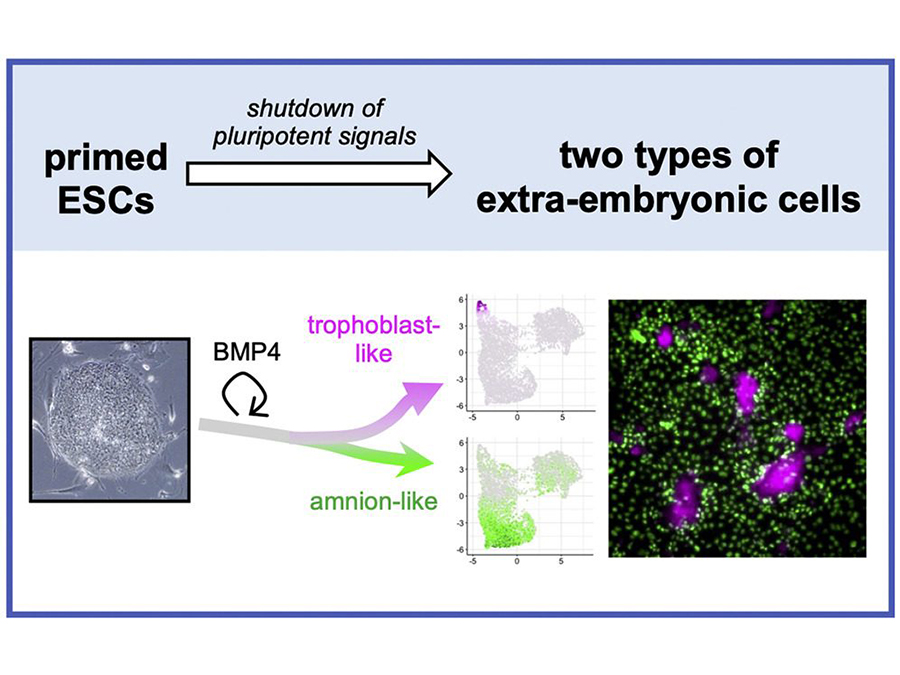Extraembryonic cell differentiation of human primed embryonic stem cells (ESCs)
Highlights
- Blocking pluripotent signals converts human primed ESCs into GATA3+ cells
- Cell-autonomous BMP signals are crucial for the extraembryonic fate decision
- The differentiating cells are bifurcated into two types of extraembryonic lineages
Summary
Human primed embryonic stem cells (ESCs) are known to be converted to cells with several trophoblast properties, but it has remained controversial whether this phenomenon represents the inherent differentiation competence of human primed ESCs to trophoblast lineages. In this study, we report that chemical blockage of ACTIVIN/NODAL and FGF signals is sufficient to steer human primed ESCs into GATA3-expressing cells that give rise to placental hormone-producing syncytia analogous to syncytiotrophoblasts of the post-implantation stage of the human embryo. Despite their cytological similarity to syncytiotrophoblasts, these syncytia arise from the non-trophoblastic differentiation trajectory that recapitulates amniogenesis. These results provide insights into the possible extraembryonic differentiation pathway that is unique in primate embryogenesis.
Paper Information
Ohgushi, M., Taniyama, N., Vandenbon, A., & Eiraku, M.. (2022). Delamination of trophoblast-like syncytia from the amniotic ectodermal analogue in human primed embryonic stem cell-based differentiation model. Cell Reports, 39(12), 110973. https://doi.org/10.1016/j.celrep.2022.110973



